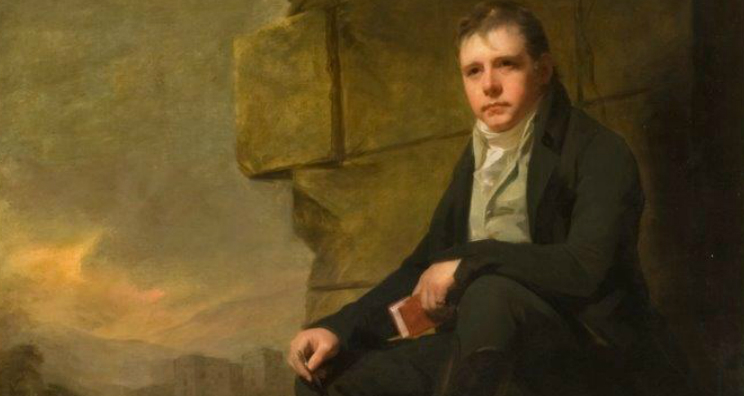Sir Walter Scott
Sir Walter Scott (1771 – 1832) is one of the most celebrated Scotsmen ever to have lived. In his lifetime he became the first international best seller, and his novels are still read in scores of translations around the world, probably more than they are in English. In Edinburgh, Scotland’s capital, his presence is inescapable, the skyline dominated by the towering Scott Monument, the tallest to an author anywhere in the world, and with Edinburgh Waverley the only train station in the world to be named after a book. Honouring his defence of the Scottish banknote, Scott still appears on Bank of Scotland notes today.
Although born in Edinburgh, Scott spent much of his youth in the Scottish Borders and developed a fascination with the songs and folklore of the region. Initially he found fame as the author of long narrative poems such as The Lay of the Last Minstrel, Marmion and The Lady of the Lake but faced with the growing success of his rival, Byron, he reinvented himself as a novelist. Uncertain of the reaction, his first novel, Waverley, was published anonymously in 1814 but proved an astonishing success, the initial print run selling out within 2 days. It was to be the forerunner of 27 novels, an extraordinary output over the remaining 18 years of his life, which included classics such as Ivanhoe, Rob Roy and The Heart of Midlothian.
With Waverley Scott, it was widely recognised, invented a new genre of literature: the historical novel. His formula, inserting fictional characters into recent history (in this case the Jacobite Rebellion, still within living memory), was an instant success. Furthermore it made the reading of novels more widely respectable, marking the emergence of the modern novel in the western world, and acknowledged as such by many of the great authors who followed including Balzac, Tolstoy, Dickens and Verne. The Walter Scott Prize takes the subtitle of Waverley, ’tis 60 years since, as the foundation of its time setting rule – books must be set at least 60 years ago.
Scott sparked a craze for all things Scottish which spread throughout Europe and America. During the Napoleonic Wars the fashionable British could no longer enjoy the European ‘Grand Tour’, and Scott’s poems and novels drew them to the Highlands in vast numbers, arguably beginning Scotland’s modern tourist industry. Scott masterminded King George IV’s historic visit to Scotland, the first by a reigning sovereign for over 150 years, with much pomp and pageantry, and during which the wearing of tartan, prohibited after the 1745 rebellion, became the required dress even for the King.
Despite his many successes, in 1826 Scott suffered a disastrous financial crash, when printing and publishing firms producing his work collapsed. Scott vowed to write himself out of all his debts, and produced vast amounts of work at high pressure despite failing health. He wrote in his Journal: ‘I will involve no friend either rich or poor – my own right hand shall do it’.
Sir Walter Scott was a kinsman of the Dukes of Buccleuch; Henry, 3rd Duke to whom his first major success The Minstrelsy of the Scottish Border was dedicated; Charles, 4th Duke, his close friend, and Walter Francis, the 5th Duke for whom he was guardian and mentor. Scott was a frequent visitor to Bowhill, the Buccleuch family home in the Scottish Borders, and today the house has a room dedicated to him with many important artefacts, including the famous portrait by Sir Henry Raeburn showing Scott as a young man. The links with Sir Walter Scott are reflected today by the current Duke who is Patron of the Abbotsford Trust, which completed a £13m programme restoring the Scottish Baronial home created by Sir Walter, and building an acclaimed heritage centre.
The Walter Scott Prize for Historical Fiction, which was created in tribute to his contribution to literature, joined the celebrations for the 250th anniversary of his birth in 2021.

